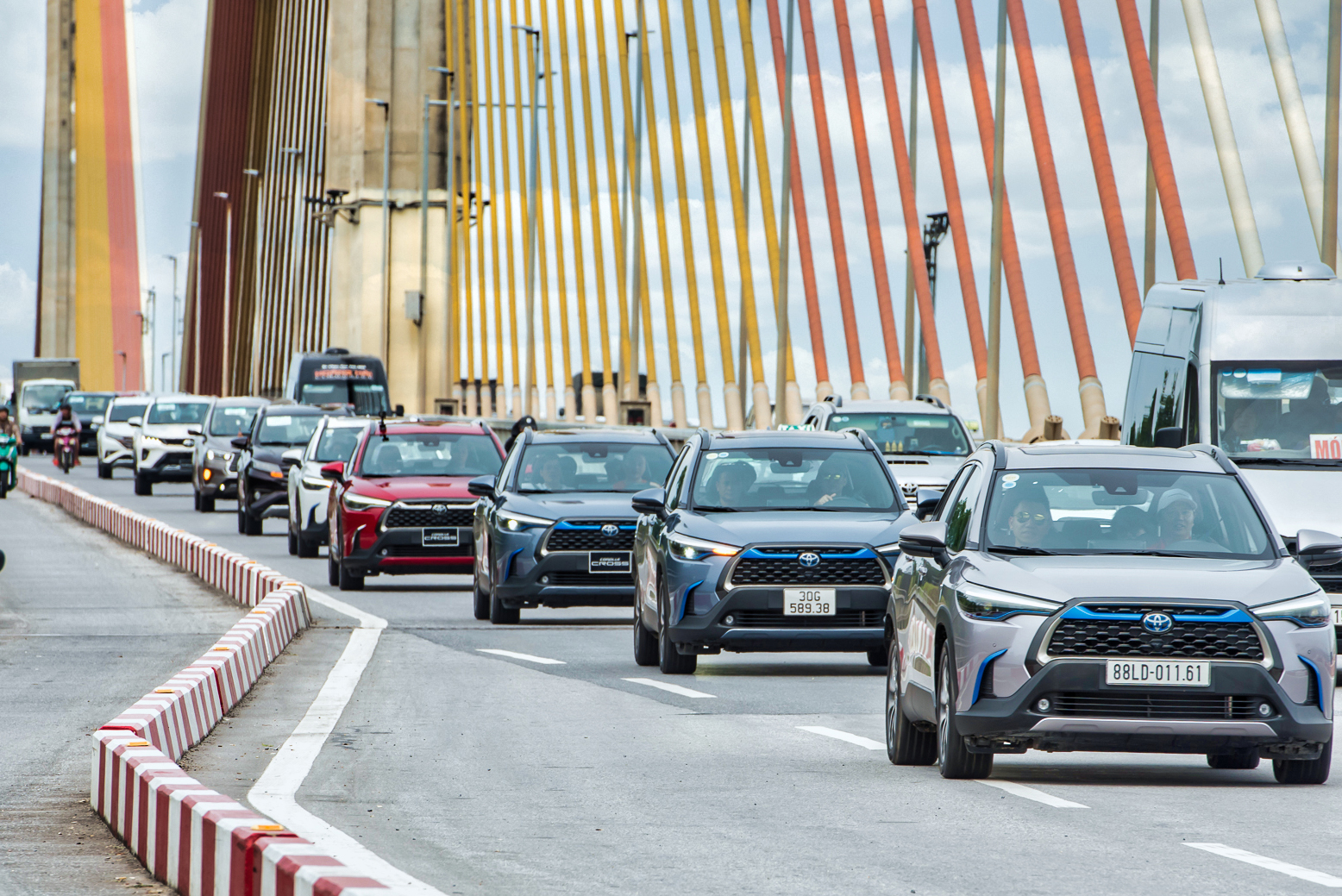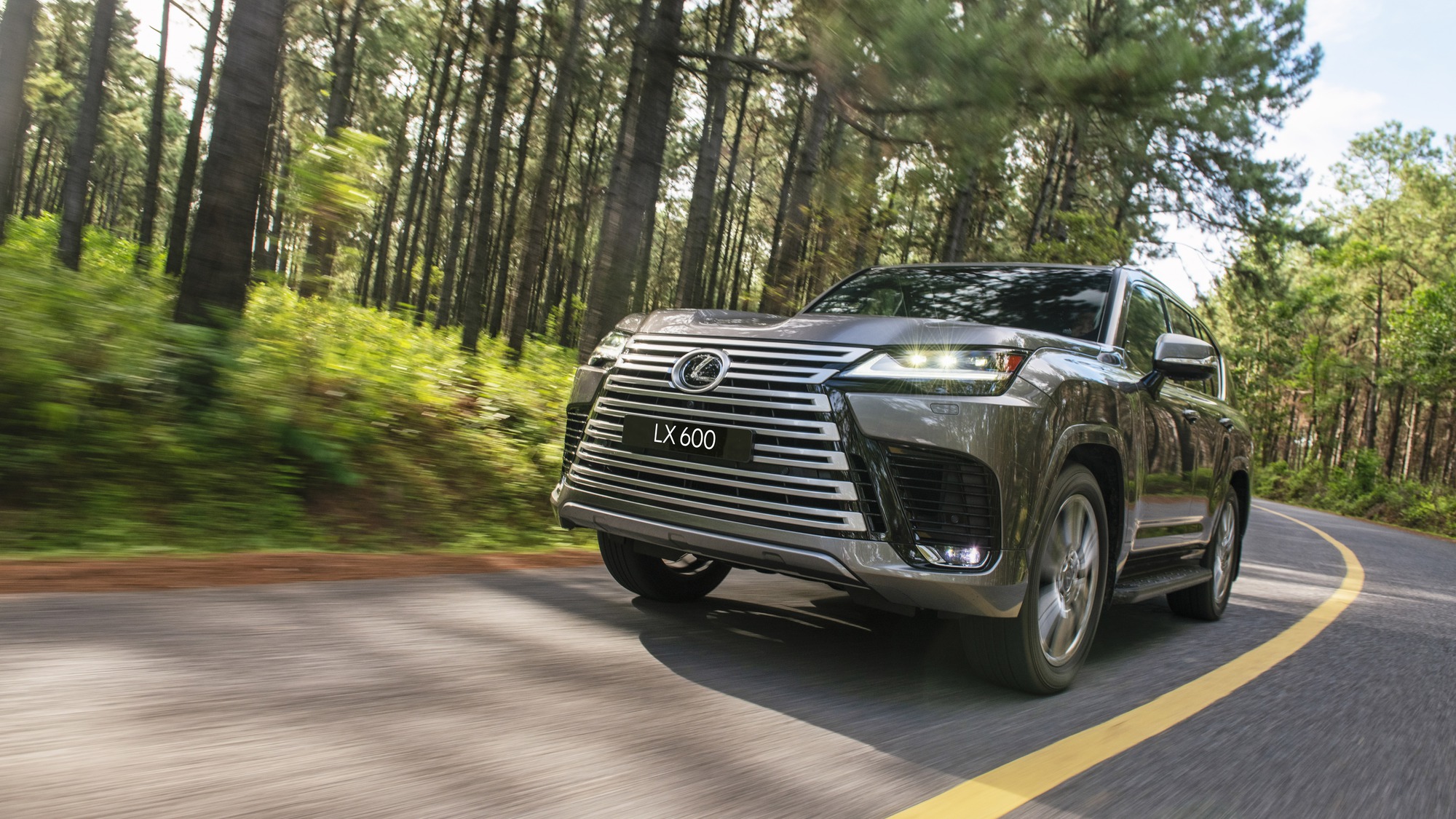Cars and motorbikes must reduce fuel consumption.
In Decision 876/QD-TTg dated July 22, 2022, the Government requested to apply fuel consumption limits (TTNL) for road motor vehicles according to a roadmap, aiming to minimize TTNL and greenhouse gas emissions.
Cars and motorbikes are about to have fuel consumption limits.
On September 30, 2024, the Ministry of Transport (now the Ministry of Construction ) issued Decision No. 1191/QD-BGTVT on the Plan to Reduce Greenhouse Gas Emissions in the Transport Sector by 2030. This Decision proposed a hypothesis on fuel consumption limits for newly manufactured, assembled and imported motor vehicles - "Measure E17".
This measure sets the target for fuel consumption by 2030: "100% of motorbikes sold meet the standard of 2.3 liters/100km; 100% of cars sold meet the following standards: small cars (<1,400cc) reach 4.7 liters/100km, medium cars (1,400-2,000cc) reach 5.3 liters/100km, large cars (>2,000cc) reach 6.4 liters/100km."
Thus, by 2030, only cars with fuel consumption below 4.7 to a maximum of 6.4 liters of fuel/100km will be sold on the market depending on engine capacity, which means applying the MEPS method (minimum energy efficiency standards). It can be seen that this TTNL level is much lower than most car models currently in circulation.
According to Mr. Tran Quang Ha, Deputy Director of the Department of Science, Technology, Environment and Construction Materials (Ministry of Construction), many measures in the field of transport have been and are being implemented to reach the Net Zero target by 2050, including the application of TTNL limits. However, the method of applying TTNL management is still being considered, with the view of harmonizing economic and environmental benefits.
"In my personal opinion, I think that controlling the TTNL level according to CAFC (the average TTNL level of enterprises) will be more suitable for the current situation. It will ensure socio-economic and environmental goals and harmonize the interests of enterprises."
"Currently, the Ministry of Construction has assigned the Vietnam Register to develop a set of standards on TTNL limits and is expected to issue them this year. This set of standards will be the basis for enterprises manufacturing and importing cars and motorbikes to self-examine and evaluate their ability to meet requirements and make timely preparations and adjustments before there is a set of mandatory standards that car manufacturers must implement. The choice of which TTNL management method will be considered, so that it is most suitable to the actual situation," said Mr. Ha.
Under MEPS, most large-engine, luxury car models are at risk of stopping sales.
Big impact on the auto industry
Recently, the Central Institute for Economic Management (CIEM) and the Institute of Transport Science and Technology (ITST) have jointly conducted an "Independent research report, proposing to limit fuel consumption for passenger cars with 9 seats or less in Vietnam by 2030, towards the goal of zero net emissions by 2050".
According to research, if Measure E17 is applied, up to 97% of ICE internal combustion engine vehicles will be forced to stop production and import due to not meeting the set limit. Of which, about 21.7% of customers can switch to using hybrid or electric cars. Thus, the annual decline in car sales in the market when applying this measure will be 77%.
The research team predicts that if the MEPS method is applied, it will have a heavy impact on the economy. While if the CAFC method is used, although there will still be impacts on GDP, the impact level will be much lower, while still aiming to ensure the target of reducing emissions.
For example, the scenario of applying MEPS will reduce the industry's contribution to GDP by about VND574 trillion and reduce state budget revenue from domestically produced and imported cars by about VND377 trillion.
While with the scenario of an annual car fleet growth rate of 10%, applying CAFC will only reduce about 73 trillion VND in value contribution to GDP and about 38 trillion VND in budget revenue.
According to Mr. Dao Cong Quyet, Vietnam Automobile Manufacturers Association, if MEPS is applied, which means establishing a TTNL limit based on engine capacity, only BEV (pure electric vehicle), HEV (self-charging hybrid) or PHEV (externally charged hybrid) vehicles will be able to meet the requirements. Accordingly, ICE vehicles (vehicles using traditional internal combustion engines) will have to stop production, assembly and sales.
This will cause very serious impacts on the domestic auto industry, state budget revenue and people's jobs.
At the same time, the application of MEPS will limit the vehicle market to certain vehicle types, while customer needs still exist and cannot be met.
Customers who are not ready to switch to hybrid or electric vehicles tend to prolong the use of old vehicles, further putting pressure on environmental protection goals, especially in vehicle recovery and recycling.
Most countries today apply the CAFC model in managing TTNL limits.
CAFC solution helps achieve dual goals
To date, most other countries that have taken the lead in implementing TTNL regulations (except China) are only applying the CAFC (or CAFE) model.
MSc. Dinh Trong Khang, Deputy Director of the Institute of Environmental Specialization (Institute of Transport Science and Technology) said: "We need to consider carefully if we apply the MEPS management model following China, because they are a country that produces vehicles independently and only applies MEPS in the early stages of policy issuance with the aim of gradually eliminating outdated technology, old vehicles with high TTNL levels and high emissions. In later stages, China has adjusted the TTNL limit management policy by simultaneously applying both MEPS and CAFC methods".
We can ignore MEPS because of its lack of flexibility compared to CAFC.
CAFC focuses on the average fuel efficiency of a manufacturer’s entire fleet, allowing them more flexibility in meeting the standards. This encourages manufacturers to develop fuel-efficient vehicles while still allowing them to produce high-powered vehicles. MEPS, on the other hand, sets minimum efficiency standards for individual vehicles, which can limit consumer choice and make it difficult for manufacturers.
CAFC provides incentives for manufacturers to invest in research and development of new fuel-saving technologies, while MEPS may result in manufacturers focusing only on meeting minimum standards, rather than working to improve fuel efficiency.
"If CAFC is used, the control of the TTNL limit will be more flexible, allowing the same car manufacturer to still sell cars with more than 2.0L or 1.4L engines, on the condition that the manufacturer must control the output of the car models sold so that the total average TTNL of the car models that the company sells in the year must be lower than the prescribed standard. In addition, the CAFC model is also the basis for building a management system to support carbon market policies in the transport sector," said a VAMA representative.
Cam Tu - xe.baoxaydung.vn
Source: https://xe.baoxaydung.vn/nhieu-mau-xe-phai-dung-ban-neu-khong-dap-ung-han-muc-tieu-thu-nhien-lieu-192250414115308028.htm







![[Photo] The 1st Congress of Phu Tho Provincial Party Committee, term 2025-2030](https://vphoto.vietnam.vn/thumb/1200x675/vietnam/resource/IMAGE/2025/9/30/1507da06216649bba8a1ce6251816820)
![[Photo] President Luong Cuong receives President of the Cuban National Assembly Esteban Lazo Hernandez](https://vphoto.vietnam.vn/thumb/1200x675/vietnam/resource/IMAGE/2025/9/30/4d38932911c24f6ea1936252bd5427fa)
![[Photo] Solemn opening of the 12th Military Party Congress for the 2025-2030 term](https://vphoto.vietnam.vn/thumb/1200x675/vietnam/resource/IMAGE/2025/9/30/2cd383b3130d41a1a4b5ace0d5eb989d)
![[Photo] General Secretary To Lam, Secretary of the Central Military Commission attends the 12th Party Congress of the Army](https://vphoto.vietnam.vn/thumb/1200x675/vietnam/resource/IMAGE/2025/9/30/9b63aaa37ddb472ead84e3870a8ae825)
![[Photo] Panorama of the cable-stayed bridge, the final bottleneck of the Ben Luc-Long Thanh expressway](https://vphoto.vietnam.vn/thumb/1200x675/vietnam/resource/IMAGE/2025/9/30/391fdf21025541d6b2f092e49a17243f)










![[Photo] National Assembly Chairman Tran Thanh Man chairs the 8th Conference of full-time National Assembly deputies](https://vphoto.vietnam.vn/thumb/402x226/vietnam/resource/IMAGE/2025/9/29/2c21459bc38d44ffaacd679ab9a0477c)




















































































Comment (0)